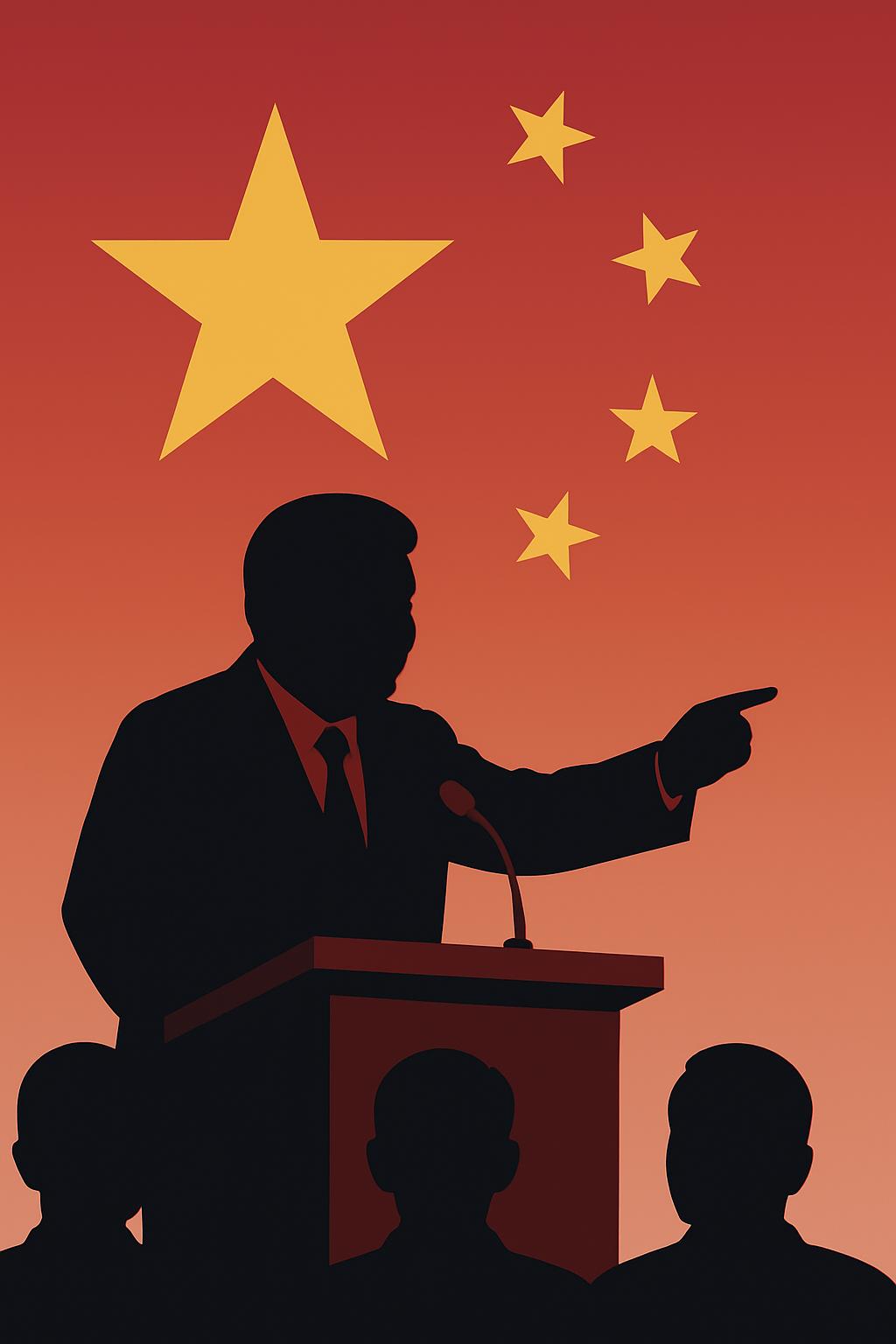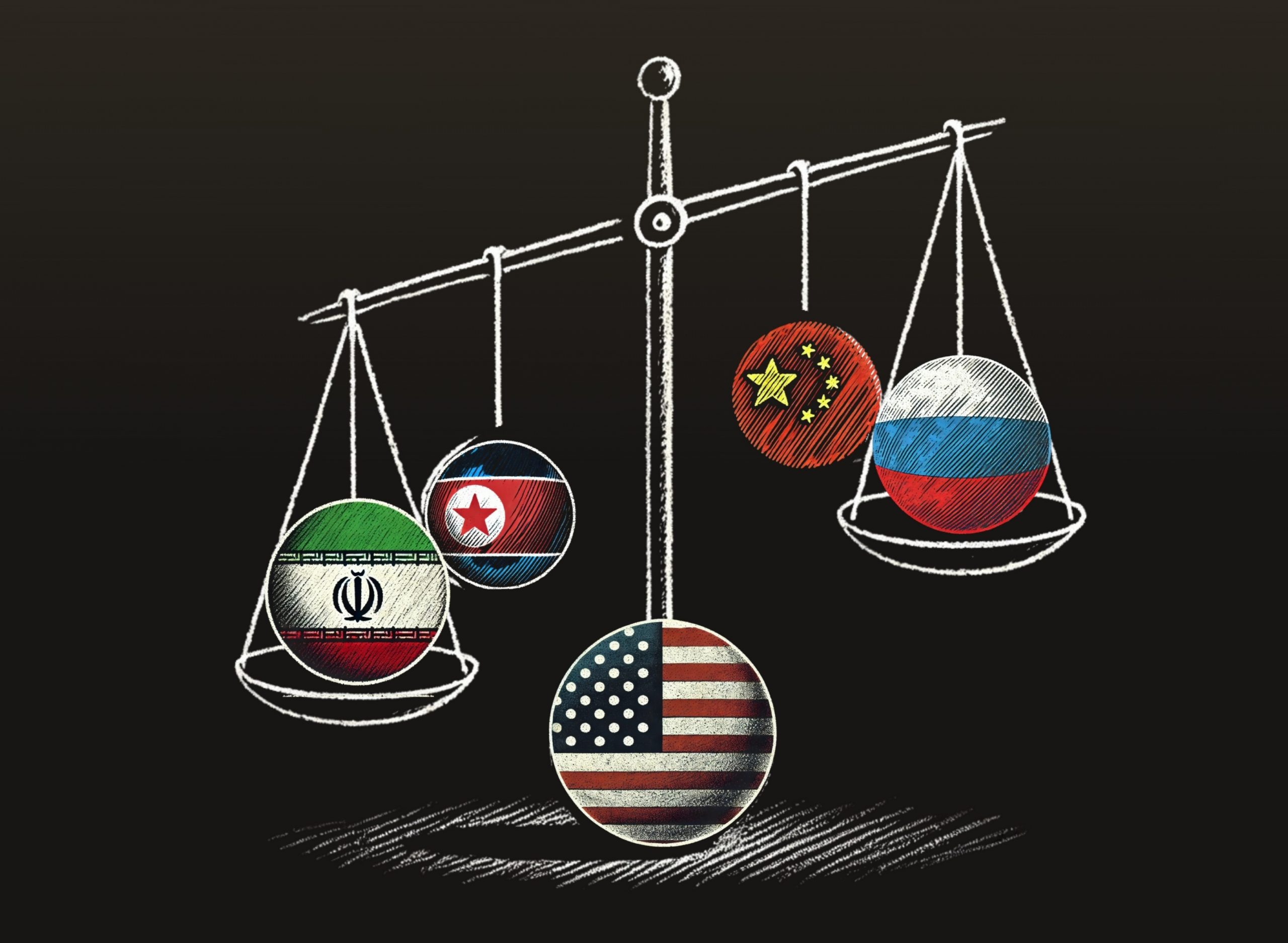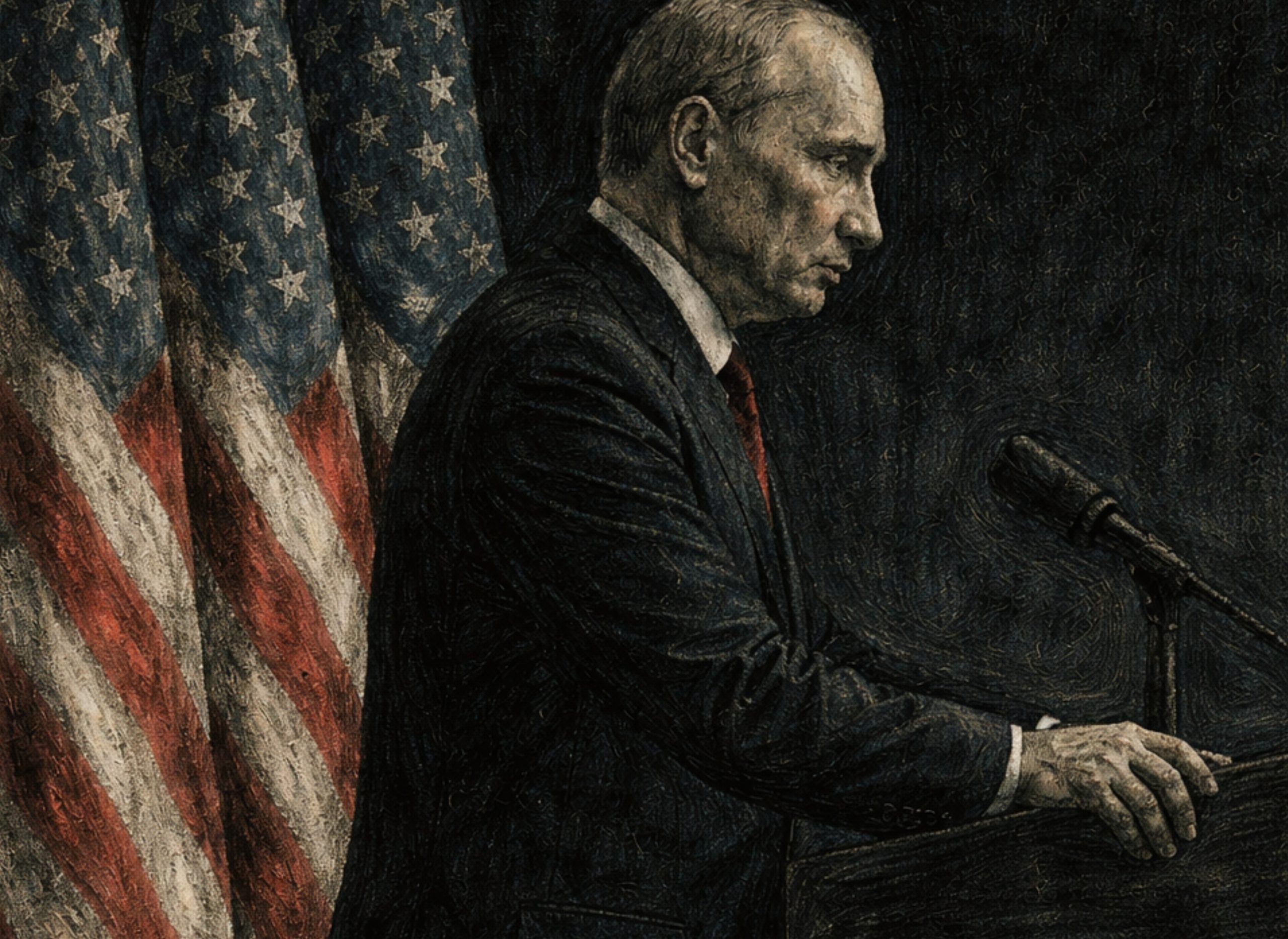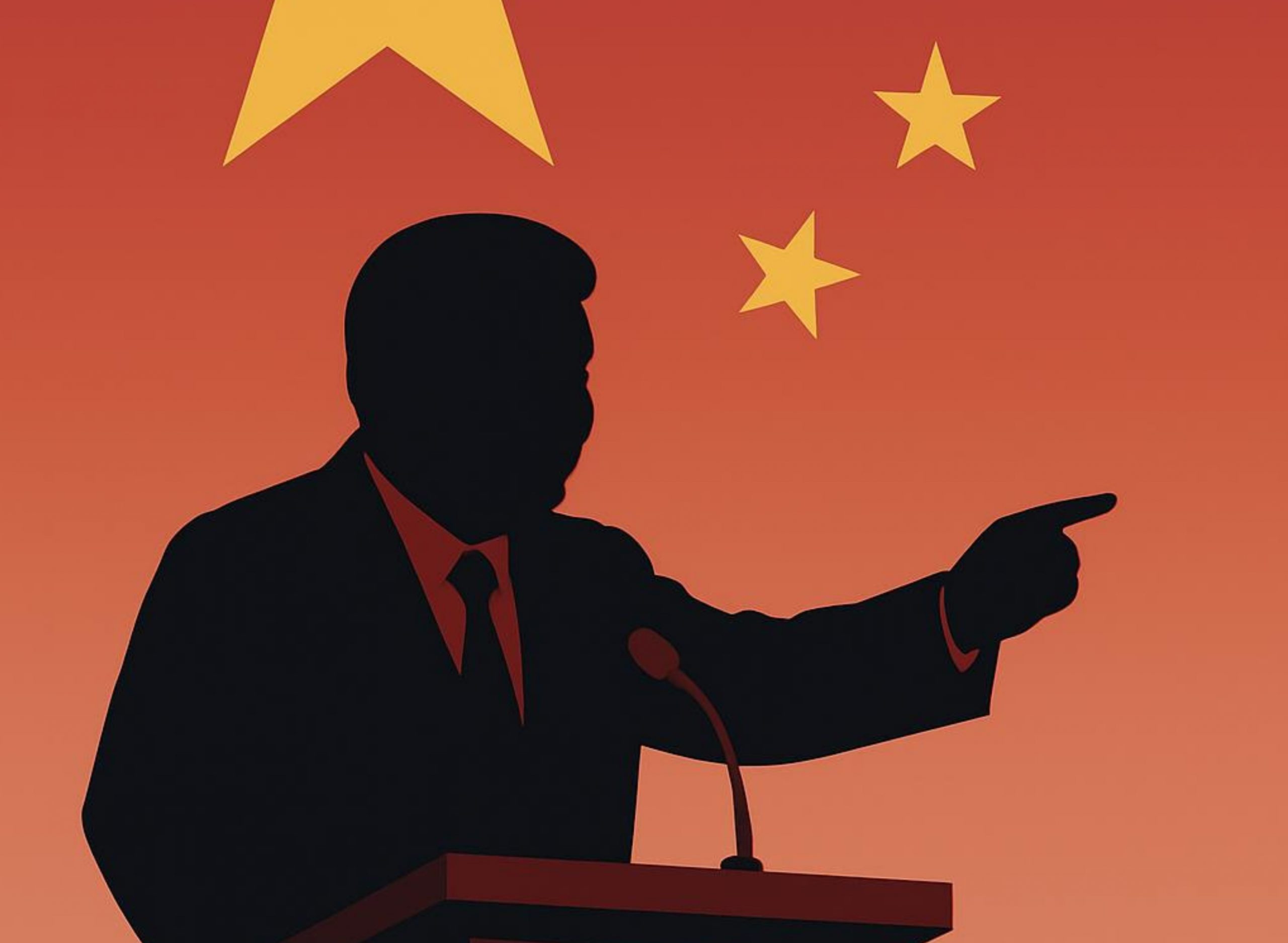

The return of Donald Trump to the White House marks a new and volatile chapter in U.S.-China relations. Unlike in 2017, Beijing this time faces a familiar adversary with heightened strategic awareness and sharpened tools of statecraft. Chinese President Xi Jinping now presents himself as the “adult in the room,” projecting confidence rooted in China’s advancements in artificial intelligence, electric vehicles, and critical minerals. These technological gains—aligned with the objectives of “Made in China 2025”—are seen as symbols of national resilience, especially when contrasted with what Xi views as an irreversibly fractured American political system. In Beijing’s eyes, the United States under Trump is a declining hegemon mired in internal discord, while China stands firm with strategic coherence and a broader global vision.
This framing is not merely rhetorical. During the trade conflict before Geneva, China has responded to Trump’s aggressive economic measures, including his announcement of 145% tariffs on Chinese goods, with what it calls “disciplined retaliation.” Beyond reciprocal tariffs, Beijing escalated asymmetrically by targeting U.S. firms like PVH Corp. and Illumina, while also reimposing restrictions on rare earth exports vital to U.S. defense and semiconductor sectors. Rather than playing into Trump’s performative tariff brinkmanship, China aims to force the U.S. to initiate future negotiations—on Beijing’s terms. As bilateral tensions deepen, Xi’s China is signaling that it will respond selectively, escalate strategically, and refuse to follow Washington’s script.
China’s response to Trump’s second term is not a reactive pivot, but a continuation of long-maturing strategic patterns in its foreign policy. Convinced that the geopolitical balance is tilting in its favor, Beijing has moved to consolidate structural leverage while projecting calm amid Washington’s escalations. This posture is grounded in a broader shift: away from tactical maneuvering and toward what Chinese policymakers frame as “strategic endurance.”
In the wake of renewed tariff confrontations and mounting restrictions on advanced technology exports, China has pursued a calibrated blend of retaliatory and preemptive actions. These include launching antitrust investigations into American tech firms, selectively targeting U.S. companies with real business stakes in China, and reinstating export controls on rare earths. While these moves serve as immediate deterrents, they also signal a larger strategic doctrine: Beijing is willing to incur costs to assert long-term economic sovereignty and strategic deterrence. Unlike its earlier, more cautious posture during Trump’s first term, China now responds with both symmetry and escalation—asymmetric enough to inflict pain but measured enough to avoid uncontrolled spirals.
At the same time, Beijing’s strategy fits squarely within its global vision under Xi Jinping: to reshape the international order away from U.S.-led dominance. This vision includes tighter alignment with Russia, Iran, and North Korea on security issues, growing activism in multilateral institutions, and deeper engagement with countries in the Global South through platforms like the Belt and Road Initiative. Trump’s renewed unilateralism and confrontational trade practices only strengthen Beijing’s case as an alternative pole of global stability—at least in the narratives it sells abroad.
Further reinforcing this shift is China’s continued investment in strategic industries—particularly dual-use technologies such as AI, quantum computing, and autonomous systems—ensuring that advances in these areas feed directly into military modernization. Its aggressive shipbuilding pace and increasing capabilities in deep-sea mineral extraction suggest a long-term strategy of shaping both physical and normative domains—be it in contested waters or critical resource governance.
holds a Master’s degree in Public Policy from Georgetown University and currently serves as the Deputy Editor of China Brief at The Jamestown Foundation.
In short, Trump’s return has not fundamentally altered Beijing’s direction—it has sharpened it. China’s foreign policy apparatus is now more confident, better coordinated, and more structurally assertive. Whether this confidence is sustainable amid mounting domestic vulnerabilities remains an open question, but for now, Beijing is signaling that it no longer plays defense in U.S.-China relations—it plays for position.
Yet behind Beijing’s confident posture and strategic coordination lies a set of internal challenges that could constrain its ability to sustain long-term competition with the United States. While Xi Jinping has sought to project strength in the face of renewed U.S. pressure—leveraging industrial policy, diplomatic outreach, and asymmetric retaliation—China’s domestic vulnerabilities remain a critical variable in the trajectory of U.S.-China competition. From economic imbalances to demographic pressures, these underlying issues complicate Beijing’s attempt to position itself as a stable counterweight to American volatility. Understanding these challenges is essential to assessing the credibility and sustainability of China’s external assertiveness.
The Quiet Collapse
One of the most immediate and tangible challenges facing China today is youth unemployment—a reality that many young people experience firsthand. Although the National Bureau of Statistics stopped publishing unemployment data some years ago, the atmosphere on Chinese social media platforms tells a more honest story: widespread pessimism. College graduates speak of “unemployment upon graduation,” mourn a once-vibrant job market, and express resentment at a system they feel has failed to reward their efforts. Official media, attempting to maintain appearances by citing vague employment figures and questionable salary data, often find themselves met with public ridicule and anger.
The consequences of widespread youth unemployment are multifaceted. The first alarming outcome is the potential resurgence of violent crime in Chinese cities. In the 1980s and 1990s, China struggled with gang violence, robbery, sexual assault, and drug-related crimes to such an extent that the central government launched two “strike hard” campaigns. These campaigns drastically lowered the threshold for death penalty convictions in an effort to deter crime—largely to little effect. It was not until China emerged as the “world’s factory” in the 21st century, creating millions of jobs, that violent crime began to decline.
This drop in crime later became a key contrast Beijing highlighted in comparing its governance favorably to the West, especially amid America’s racial tensions and opioid crisis. However, the decline was less a result of policy success and more due to the job opportunities created by rapid economic growth. Now, with a new generation of unemployed youth reminiscent of the 1980s and 1990s, a similar wave of violent crime appears to be resurfacing.
While the Ministry of Public Security insists that crime rates are still falling overall, public perception suggests otherwise. The phrase “Xianzhong”—a reference to the 17th-century warlord Zhang Xianzhong—is now a widely circulated meme on Chinese social media, used to describe a surge in brutal crimes involving multiple victims. Zhang, infamous for his reign of terror and massacres during the Ming-Qing transition, left Sichuan Province with a population 75% lower than before his rule. Today, invoking his name reflects growing public anxiety about rising violence.
In short, Trump’s return has not fundamentally altered Beijing’s direction—it has sharpened it. China’s foreign policy apparatus is now more confident, better coordinated, and more structurally assertive. Whether this confidence is sustainable amid mounting domestic vulnerabilities remains an open question, but for now, Beijing is signaling that it no longer plays defense in U.S.-China relations—it plays for position.
Yet behind Beijing’s confident posture and strategic coordination lies a set of internal challenges that could constrain its ability to sustain long-term competition with the United States. While Xi Jinping has sought to project strength in the face of renewed U.S. pressure—leveraging industrial policy, diplomatic outreach, and asymmetric retaliation—China’s domestic vulnerabilities remain a critical variable in the trajectory of U.S.-China competition. From economic imbalances to demographic pressures, these underlying issues complicate Beijing’s attempt to position itself as a stable counterweight to American volatility. Understanding these challenges is essential to assessing the credibility and sustainability of China’s external assertiveness.
The Quiet Collapse
One of the most immediate and tangible challenges facing China today is youth unemployment—a reality that many young people experience firsthand. Although the National Bureau of Statistics stopped publishing unemployment data some years ago, the atmosphere on Chinese social media platforms tells a more honest story: widespread pessimism. College graduates speak of “unemployment upon graduation,” mourn a once-vibrant job market, and express resentment at a system they feel has failed to reward their efforts. Official media, attempting to maintain appearances by citing vague employment figures and questionable salary data, often find themselves met with public ridicule and anger.
The consequences of widespread youth unemployment are multifaceted. The first alarming outcome is the potential resurgence of violent crime in Chinese cities. In the 1980s and 1990s, China struggled with gang violence, robbery, sexual assault, and drug-related crimes to such an extent that the central government launched two “strike hard” campaigns. These campaigns drastically lowered the threshold for death penalty convictions in an effort to deter crime—largely to little effect. It was not until China emerged as the “world’s factory” in the 21st century, creating millions of jobs, that violent crime began to decline.
This drop in crime later became a key contrast Beijing highlighted in comparing its governance favorably to the West, especially amid America’s racial tensions and opioid crisis. However, the decline was less a result of policy success and more due to the job opportunities created by rapid economic growth. Now, with a new generation of unemployed youth reminiscent of the 1980s and 1990s, a similar wave of violent crime appears to be resurfacing.
While the Ministry of Public Security insists that crime rates are still falling overall, public perception suggests otherwise. The phrase “Xianzhong”—a reference to the 17th-century warlord Zhang Xianzhong—is now a widely circulated meme on Chinese social media, used to describe a surge in brutal crimes involving multiple victims. Zhang, infamous for his reign of terror and massacres during the Ming-Qing transition, left Sichuan Province with a population 75% lower than before his rule. Today, invoking his name reflects growing public anxiety about rising violence.


Admittedly, China today is not the same as it was in the 1990s. Parents are now more financially capable of supporting unemployed children, and the internet offers an endless stream of entertainment to pacify idle youth. However, these buffers may only change the nature of the violence, not prevent it. Financial motives may give way to ideologically or emotionally driven violence, such as incel-inspired attacks on women or rage-fueled conflicts between people of different social classes—say, between security guards and residents, or food delivery workers and customers.
Ultimately, rising violence could force local governments to dramatically increase public security spending, placing additional strain on already precarious municipal budgets. As public trust in the government’s ability to maintain order erodes, these local crises could reverberate upward, weakening Beijing’s domestic legitimacy and undermining its competitive standing on the international stage. The second major consequence of China’s rising youth unemployment is a further decline in marriage and fertility rates—an issue that already troubles Beijing deeply.
Joblessness has left many young people disillusioned with the present and pessimistic about the future. In an environment with limited channels for political or social expression, this anxiety has often manifested in the form of passive resistance—most notably, the now widely discussed “lying flat” phenomenon. This refers to a conscious withdrawal from ambition and conventional societal expectations: refusing to work, consume, socialize, and marry.
Online forums and group chats dedicated to “lying flat” share tactics on how to minimize spending while maximizing leisure and time off the grid. The spread of this ethos has alarmed Beijing, prompting a wave of state media campaigns that attempt to glorify diligence and hard work. Yet these efforts have largely backfired, fueling further cynicism and reinforcing the appeal of passive disengagement. At the other extreme lies the phenomenon of “involution,” a term borrowed from anthropology that has taken on new meaning among Chinese youth.
In today’s context, it describes a hypercompetitive environment in which young people sacrifice their personal lives and well-being for diminishing returns—spending excessive time preparing for exams, working overtime, or engaging in relentless career advancement. These individuals are, by definition, too overwhelmed to consider marriage or family life. Ironically, while state media denounces “lying flat,” it has also criticized the social consequences of involution, again with little effect.
Admittedly, China today is not the same as it was in the 1990s. Parents are now more financially capable of supporting unemployed children, and the internet offers an endless stream of entertainment to pacify idle youth. However, these buffers may only change the nature of the violence, not prevent it. Financial motives may give way to ideologically or emotionally driven violence, such as incel-inspired attacks on women or rage-fueled conflicts between people of different social classes—say, between security guards and residents, or food delivery workers and customers.
Ultimately, rising violence could force local governments to dramatically increase public security spending, placing additional strain on already precarious municipal budgets. As public trust in the government’s ability to maintain order erodes, these local crises could reverberate upward, weakening Beijing’s domestic legitimacy and undermining its competitive standing on the international stage. The second major consequence of China’s rising youth unemployment is a further decline in marriage and fertility rates—an issue that already troubles Beijing deeply.
Joblessness has left many young people disillusioned with the present and pessimistic about the future. In an environment with limited channels for political or social expression, this anxiety has often manifested in the form of passive resistance—most notably, the now widely discussed “lying flat” phenomenon. This refers to a conscious withdrawal from ambition and conventional societal expectations: refusing to work, consume, socialize, and marry.
Online forums and group chats dedicated to “lying flat” share tactics on how to minimize spending while maximizing leisure and time off the grid. The spread of this ethos has alarmed Beijing, prompting a wave of state media campaigns that attempt to glorify diligence and hard work. Yet these efforts have largely backfired, fueling further cynicism and reinforcing the appeal of passive disengagement. At the other extreme lies the phenomenon of “involution,” a term borrowed from anthropology that has taken on new meaning among Chinese youth.
In today’s context, it describes a hypercompetitive environment in which young people sacrifice their personal lives and well-being for diminishing returns—spending excessive time preparing for exams, working overtime, or engaging in relentless career advancement. These individuals are, by definition, too overwhelmed to consider marriage or family life. Ironically, while state media denounces “lying flat,” it has also criticized the social consequences of involution, again with little effect.
This refers to a conscious withdrawal from ambition and conventional societal expectations: refusing to work, consume, socialize, and marry.
Both trends—lying flat and involution—are symptomatic responses to China’s youth unemployment crisis. More alarmingly, they are becoming ingrained in the cultural psyche of this generation. Even if Beijing succeeds in reversing the jobs crisis, many young people may carry forward deeply internalized norms that devalue marriage and parenthood. In such a scenario, China faces not only a shrinking demographic dividend but also mounting social welfare costs in an aging society, both of which could seriously undermine its long-term economic competitiveness.
Risk of Nationalism
Since Xi Jinping consolidated power, nationalism has become the dominant theme in China’s domestic propaganda. From the doctrine of the “Three Confidences” to the state-sponsored narrative of a great power resurgence, nationalist discourse has permeated every facet of how the Chinese public understands both domestic and international politics. Dissenting voices that challenge this ideological framework have been systematically suppressed. On the surface, this surge of nationalism has served to unify Chinese society and catalyze achievements—such as technological breakthroughs by young scientists and engineers eager to challenge Western monopolies in advanced sectors. However, as the traditional Chinese philosophy of moderation cautions, extremes eventually invite reversal. Nationalist fervor, having reached its peak in utility, is beginning to produce adverse effects on China’s strategic judgment and global competitiveness.
One of the most significant risks is the distortion of foreign policy decision-making. While some analysts might assume a disconnect between a manipulated public and a calculating elite, this dichotomy does not fully apply to contemporary China. Years of intense nationalist propaganda, reinforced by social media algorithms, have rendered nationalist messaging ubiquitous—even among political elites. Chinese officials, many of whom are not fundamentally different in cognitive disposition from ordinary citizens, are often equally exposed to the relentless tide of hyper-nationalist content. The rise of “wolf warrior” diplomacy illustrates this phenomenon well, where emotional grandstanding has often replaced strategic pragmatism.
Unlike the structured nationalism of the 19th century, today’s version—amplified through social media—is entangled with disinformation, conspiracy theories, and alt-facts that encourage hostility toward external adversaries and breed a false sense of domestic security. This has tangible consequences. For instance, Zhao Lijian, a prominent face of China’s wolf warrior diplomacy and now a senior official in the Department of Boundary and Ocean Affairs, publicly promoted the conspiracy theory that COVID-19 originated from a U.S. biolab. When political elites themselves subscribe to such beliefs, the effects cascade—junior officials may reflect them in policy memos, while senior leaders might allow them to shape diplomatic strategies.
Though China has so far avoided catastrophic miscalculations, the persistent dominance of nationalism as a governing ideology sustains the risk of strategic blunders. A single major error, stemming from disinformation-laced decision-making, could severely damage Beijing’s international credibility and undercut the very competitiveness that its nationalist rhetoric seeks to bolster.
Another significant risk posed by nationalist fervor is its potential to rigidify China’s foreign policy, limiting Beijing’s ability to respond with the necessary flexibility to a changing global landscape. It is often assumed that in a highly centralized authoritarian system like Xi Jinping’s China, public opinion plays little role in policy decisions. But this assumption is overly simplistic. Even in an autocracy, public opinion—particularly in the form of mass sentiment—is a factor the leadership cannot ignore, as maintaining social stability is paramount to regime survival.
Beijing’s initial deployment of nationalism aimed to harness its emotional appeal for domestic mobilization. Yet, as history repeatedly shows, nationalism is a volatile force that can turn against its architects. Once released, this political Pandora’s box often escapes the control of propaganda and ideological departments. Mild, state-guided patriotism, once fed through the algorithmic echo chambers of Chinese social media, quickly evolves into a louder and more extreme form of nationalism. And in the age of virality, the loudest voices—however fringe—often dominate the public discourse.
This dynamic presents a real danger: in a future diplomatic crisis, Beijing may feel compelled to escalate rather than de-escalate, not out of strategic calculation, but out of fear of appearing weak in the face of seemingly overwhelming nationalist sentiment. In such cases, even officials and elites may internalize and amplify extremist narratives. The result is a foreign policy that becomes overly aggressive, predictable, and ultimately isolating. If nationalist outrage drives Beijing to repeatedly escalate diplomatic conflicts, it risks alienating allies and undermining China’s long-term strategic flexibility.
The Empire of Empty Labs
China’s campaign for indigenous innovation in semiconductors, biotechnology, quantum computing, and other advanced fields has unleashed a wave of duplicative investment and wasteful spending that threatens to undercut its competitiveness. Observers have even dubbed Beijing’s chip push a “Great Semiconductor Leap Forward”—a telling reference to Mao-era excess—as thousands of ventures have sprung up in response to top-down exhortations. Local governments, eager to answer Xi Jinping’s call for tech self-sufficiency, have “piled in with duplicative and inefficient projects,” leading to “profound waste” and rife misallocation of funds.
In 2021 alone, more than 4,350 new semiconductor companies were registered in a frenzy, and by 2022 some “large-scale wastage and corruption” had become evident—with many of the new firms suspected of outright fraud. This pattern isn’t confined to chips: after the central government designated life sciences as strategic, nearly every province raced to build its own biotech research park, resulting in parallel, overlapping efforts in almost every major city. Such campaign-style development, reminiscent of past overzealous state drives, has created bubbles of investment without corresponding breakthroughs.
Chinese commentators and investigators have highlighted the pitfalls. Caixin—a leading Chinese business outlet—exposed the collapse of Wuhan’s Hongxin Semiconductor Manufacturing Corp (HSMC) as a cautionary tale. HSMC, a would-be chip champion backed by ¥128 billion ($18.5 billion) from the Wuhan government, “grossly exaggerated its technological capacity” to win funding and then failed spectacularly. The startup had no prior semiconductor experience, promised impossible feats (from 90nm down to 7nm manufacturing in one leap), and ultimately produced nothing but an unfinished factory—essentially a multi-billion dollar con job playing off officials’ desperation for a local tech success.
This debacle underscores how poor oversight and pressure to meet self-reliance targets can funnel resources into dubious projects. Even Chinese authorities have begun acknowledging the problem: in 2022, Beijing launched an anti-graft crackdown on its semiconductor “Big Fund” and related agencies after huge state investments led to “disorderly capital expansion” and more scandals. All told, the excesses of the self-reliance drive have led to inefficient capital use—money sunk into redundant facilities, scams, and “empty” projects—rather than productive innovation, undermining China’s ability to compete globally on quality and ROI.
Beyond wasted resources, China’s state-led tech strategy risks creating a fragile innovation ecosystem that could erode its long-term competitive edge. The “new type of whole-of-nation” approach championed by Xi—basically throwing massive state support behind all strategic tech sectors at once—echoes the Great Leap Forward’s overreach and can yield a brittle system. Political mandates and hype are sometimes displacing market discipline and honest evaluation, which may mask serious weaknesses until crisis hits. For example, China’s Ministry of Industry and IT has touted supposed breakthroughs (like a homegrown DUV lithography machine) as victories for self-reliance, yet experts note the showcased tools still “lag significantly behind” world leaders like ASML in precision and yield, with low output and high costs plaguing local efforts.
Such overstatements of progress create a false sense of security and divert attention from the underlying gaps. Meanwhile, tight Party oversight and centralized control can stifle the very innovation Beijing seeks. Even Chinese observers admit that higher levels of political control “may hinder innovation” in private firms. China’s tech drive often favors state-aligned “champions” and military-linked labs, potentially crowding out the bottom-up creativity and competition that spur true breakthroughs. Top-down directives to meet ambitious goals can also pressure companies and officials to avoid acknowledging setbacks, leading to groupthink or skewed R&D priorities—a systemic fragility if the chosen path proves wrong.
Moreover, the expansive self-reliance agenda has introduced structural inefficiencies that sap China’s innovative momentum. By aiming for self-sufficiency in every critical technology simultaneously, Beijing is spreading resources thin and incurring huge opportunity costs. As one analysis notes, China is effectively “splitting resources… trying to invest in both” incremental upgrades and next-generation leaps, a dual track that is difficult to sustain given the capital and talent required. The result so far has been a lot of output, but not commensurate productivity gains.
In fact, after years of heavy-handed industrial campaigns, China’s total factor productivity has stagnated, and overall economic growth has slowed. Overcapacity is a major culprit—protected domestic industries have scaled up quickly behind subsidies, but many now face gluts and price wars that “hurt the ability of Chinese companies to invest in innovation and product development.” In other words, the state-driven rush to dominate sectors has led to glutted markets (from solar panels to chips), eroding profit margins and leaving firms with less incentive or cash to push the technological frontier.
This undermines China’s international competitiveness: companies burdened with inefficiencies and razor-thin margins struggle to match global leaders in cutting-edge R&D. Even the much-touted “innovation dividend” of China’s rise has been largely sacrificed in pursuit of tech autarky—resources that could have lifted productivity if deployed in areas of comparative advantage were instead poured into duplicating capabilities at home. Beijing’s insistence on replacing foreign inputs at all costs has, in many cases, delayed access to the best technologies and know-how, effectively slowing innovation diffusion.
The tolerance for inefficiency carries the risk of systemic fragility: should economic conditions tighten or political winds shift, the vast web of subsidized labs and firms could face a reckoning. In short, China’s aggressive self-reliance drive—while yielding some short-term wins—has sown inefficiency, misallocation, and structural risks into its tech sector. Unless corrected, these excesses may undercut China’s ability to lead in the very industries it is targeting, leaving it vulnerable to falling behind more nimble and efficient global competitors.
Succession Uncertainty
Perhaps the most fundamental vulnerability facing Beijing today is the unresolved question of succession. Since consolidating power in 2012, Xi Jinping has yet to formally designate—or even hint at—a successor who would eventually assume the posts of President, Party General Secretary, and Chairman of the Central Military Commission. This is a sharp break from the precedent established after Deng Xiaoping institutionalized leadership transitions: successors were typically elevated to the Politburo Standing Committee by the end of a sitting leader’s first term and informally acknowledged as heirs apparent, often selected by the previous top leader in a model of “designated succession.”
This system functioned—albeit imperfectly—through the transitions from Jiang Zemin to Hu Jintao, and then from Hu to Xi. But it was effectively dismantled in 2017 when Xi abolished term limits for the presidency and removed one of Hu Jintao’s presumed successors, Sun Zhengcai, via a sweeping purge. Since then, Xi has promoted loyalists from his Fujian and Zhejiang networks into key positions but has shown no interest in grooming any one of them as a future successor. Xi is now 72 years old. Statistically, members of the Politburo Standing Committee have an average life expectancy of around 90, suggesting that a decision on succession will likely be necessary within the next decade.
However, appointing a successor risks creating a competing center of power, as ambitious elites begin to coalesce around the heir apparent, planning for a post-Xi era. For a leader as deeply invested in personal control as Xi, this is an undesirable scenario—one that could easily spiral into factional struggles reminiscent of imperial Chinese courts, where emperors often clashed with their designated heirs in their twilight years.
Yet the alternative is equally perilous. If Xi refuses to appoint a successor and dies unexpectedly, the result could be a brutal elite power struggle, as various factions scramble to inherit the vast and personalized authority he has accumulated. The eventual winner of such a contest would likely face a severe legitimacy deficit, having ascended without Xi’s blessing. To consolidate power, they may feel compelled to launch another round of purges to eliminate rivals—an effort that would require overwhelming control over China’s security and military apparatus like Xi, something not easily replicated.
In short, whether Xi names a successor or not, China faces what might be called the “succession paradox”: highly centralized power is inherently difficult to transfer without destabilizing consequences. If an aging Xi—surrounded by sycophants and dulled by cognitive decline—fails to manage this transition effectively, the result could be a domestic political crisis that dramatically weakens China’s position in its strategic competition with the United States.
In sum, while Beijing’s external posture under Xi Jinping projects strategic composure and calibrated assertiveness in the face of Trump’s renewed pressure, its long-term competitiveness remains vulnerable to internal contradictions. The combination of surging youth unemployment, rigidified nationalism, inefficient techno-industrial policy, and unresolved succession risks creates a fragile foundation beneath the image of a resilient superpower.
These challenges not only threaten China’s domestic stability but also undermine the very confidence that fuels its assertive foreign policy. As the U.S.-China rivalry intensifies in Trump’s second term, people must not only assess China’s strengths, but also understand the liabilities Beijing cannot fully admit. In the end, the true contest may not lie in who escalates more quickly—but in who can better withstand the consequences of their own contradictions.
Both trends—lying flat and involution—are symptomatic responses to China’s youth unemployment crisis. More alarmingly, they are becoming ingrained in the cultural psyche of this generation. Even if Beijing succeeds in
reversing the jobs crisis, many young people may carry forward deeply internalized norms that devalue marriage and parenthood. In such a scenario, China faces not only a shrinking demographic dividend but also mounting social welfare costs in an aging society, both of which could seriously undermine its long-term economic competitiveness.
Risk of Nationalism
Since Xi Jinping consolidated power, nationalism has become the dominant theme in China’s domestic propaganda. From the doctrine of the “Three Confidences” to the state-sponsored narrative of a great power resurgence, nationalist discourse has permeated every facet of how the Chinese public understands both domestic and international politics. Dissenting voices that challenge this ideological framework have been systematically suppressed. On the surface, this surge of nationalism has served to unify Chinese society and catalyze achievements—such as technological breakthroughs by young scientists and engineers eager to challenge Western monopolies in advanced sectors. However, as the traditional Chinese philosophy of moderation cautions, extremes eventually invite reversal. Nationalist fervor, having reached its peak in utility, is beginning to produce adverse effects on China’s strategic judgment and global competitiveness.
One of the most significant risks is the distortion of foreign policy decision-making. While some analysts might assume a disconnect between a manipulated public and a calculating elite, this dichotomy does not fully apply to contemporary China. Years of intense nationalist propaganda, reinforced by social media algorithms, have rendered nationalist messaging ubiquitous—even among political elites. Chinese officials, many of whom are not fundamentally different in cognitive disposition from ordinary citizens, are often equally exposed to the relentless tide of hyper-nationalist content. The rise of “wolf warrior” diplomacy illustrates this phenomenon well, where emotional grandstanding has often replaced strategic pragmatism.
Unlike the structured nationalism of the 19th century, today’s version—amplified through social media—is entangled with disinformation, conspiracy theories, and alt-facts that encourage hostility toward external adversaries and breed a false sense of domestic security. This has tangible consequences. For instance, Zhao Lijian, a prominent face of China’s wolf warrior diplomacy and now a senior official in the Department of Boundary and Ocean Affairs, publicly promoted the conspiracy theory that COVID-19 originated from a U.S. biolab. When political elites themselves subscribe to such beliefs, the effects cascade—junior officials may reflect them in policy memos, while senior leaders might allow them to shape diplomatic strategies.
Though China has so far avoided catastrophic miscalculations, the persistent dominance of nationalism as a governing ideology sustains the risk of strategic blunders. A single major error, stemming from disinformation-laced decision-making, could severely damage Beijing’s international credibility and undercut the very competitiveness that its nationalist rhetoric seeks to bolster.
Another significant risk posed by nationalist fervor is its potential to rigidify China’s foreign policy, limiting Beijing’s ability to respond with the necessary flexibility to a changing global landscape. It is often assumed that in a highly centralized authoritarian system like Xi Jinping’s China, public opinion plays little role in policy decisions. But this assumption is overly simplistic. Even in an autocracy, public opinion—particularly in the form of mass sentiment—is a factor the leadership cannot ignore, as maintaining social stability is paramount to regime survival.
Beijing’s initial deployment of nationalism aimed to harness its emotional appeal for domestic mobilization. Yet, as history repeatedly shows, nationalism is a volatile force that can turn against its architects. Once released, this political Pandora’s box often escapes the control of propaganda and ideological departments. Mild, state-guided patriotism, once fed through the algorithmic echo chambers of Chinese social media, quickly evolves into a louder and more extreme form of nationalism. And in the age of virality, the loudest voices—however fringe—often dominate the public discourse.
This dynamic presents a real danger: in a future diplomatic crisis, Beijing may feel compelled to escalate rather than de-escalate, not out of strategic calculation, but out of fear of appearing weak in the face of seemingly overwhelming nationalist sentiment. In such cases, even officials and elites may internalize and amplify extremist narratives. The result is a foreign policy that becomes overly aggressive, predictable, and ultimately isolating. If nationalist outrage drives Beijing to repeatedly escalate diplomatic conflicts, it risks alienating allies and undermining China’s long-term strategic flexibility.
The Empire of Empty Labs
China’s campaign for indigenous innovation in semiconductors, biotechnology, quantum computing, and other advanced fields has unleashed a wave of duplicative investment and wasteful spending that threatens to undercut its competitiveness. Observers have even dubbed Beijing’s chip push a “Great Semiconductor Leap Forward”—a telling reference to Mao-era excess—as thousands of ventures have sprung up in response to top-down exhortations. Local governments, eager to answer Xi Jinping’s call for tech self-sufficiency, have “piled in with duplicative and inefficient projects,” leading to “profound waste” and rife misallocation of funds.
In 2021 alone, more than 4,350 new semiconductor companies were registered in a frenzy, and by 2022 some “large-scale wastage and corruption” had become evident—with many of the new firms suspected of outright fraud. This pattern isn’t confined to chips: after the central government designated life sciences as strategic, nearly every province raced to build its own biotech research park, resulting in parallel, overlapping efforts in almost every major city. Such campaign-style development, reminiscent of past overzealous state drives, has created bubbles of investment without corresponding breakthroughs.
Chinese commentators and investigators have highlighted the pitfalls. Caixin—a leading Chinese business outlet—exposed the collapse of Wuhan’s Hongxin Semiconductor Manufacturing Corp (HSMC) as a cautionary tale. HSMC, a would-be chip champion backed by ¥128 billion ($18.5 billion) from the Wuhan government, “grossly exaggerated its technological capacity” to win funding and then failed spectacularly. The startup had no prior semiconductor experience, promised impossible feats (from 90nm down to 7nm manufacturing in one leap), and ultimately produced nothing but an unfinished factory—essentially a multi-billion dollar con job playing off officials’ desperation for a local tech success.
This debacle underscores how poor oversight and pressure to meet self-reliance targets can funnel resources into dubious projects. Even Chinese authorities have begun acknowledging the problem: in 2022, Beijing launched an anti-graft crackdown on its semiconductor “Big Fund” and related agencies after huge state investments led to “disorderly capital expansion” and more scandals. All told, the excesses of the self-reliance drive have led to inefficient capital use—money sunk into redundant facilities, scams, and “empty” projects—rather than productive innovation, undermining China’s ability to compete globally on quality and ROI.
Beyond wasted resources, China’s state-led tech strategy risks creating a fragile innovation ecosystem that could erode its long-term competitive edge. The “new type of whole-of-nation” approach championed by Xi—basically throwing massive state support behind all strategic tech sectors at once—echoes the Great Leap Forward’s overreach and can yield a brittle system. Political mandates and hype are sometimes displacing market discipline and honest evaluation, which may mask serious weaknesses until crisis hits. For example, China’s Ministry of Industry and IT has touted supposed breakthroughs (like a homegrown DUV lithography machine) as victories for self-reliance, yet experts note the showcased tools still “lag significantly behind” world leaders like ASML in precision and yield, with low output and high costs plaguing local efforts.
Such overstatements of progress create a false sense of security and divert attention from the underlying gaps. Meanwhile, tight Party oversight and centralized control can stifle the very innovation Beijing seeks. Even Chinese observers admit that higher levels of political control “may hinder innovation” in private firms. China’s tech drive often favors state-aligned “champions” and military-linked labs, potentially crowding out the bottom-up creativity and competition that spur true breakthroughs. Top-down directives to meet ambitious goals can also pressure companies and officials to avoid acknowledging setbacks, leading to groupthink or skewed R&D priorities—a systemic fragility if the chosen path proves wrong.
Moreover, the expansive self-reliance agenda has introduced structural inefficiencies that sap China’s innovative momentum. By aiming for self-sufficiency in every critical technology simultaneously, Beijing is spreading resources thin and incurring huge opportunity costs. As one analysis notes, China is effectively “splitting resources… trying to invest in both” incremental upgrades and next-generation leaps, a dual track that is difficult to sustain given the capital and talent required. The result so far has been a lot of output, but not commensurate productivity gains.
In fact, after years of heavy-handed industrial campaigns, China’s total factor productivity has stagnated, and overall economic growth has slowed. Overcapacity is a major culprit—protected domestic industries have scaled up quickly behind subsidies, but many now face gluts and price wars that “hurt the ability of Chinese companies to invest in innovation and product development.” In other words, the state-driven rush to dominate sectors has led to glutted markets (from solar panels to chips), eroding profit margins and leaving firms with less incentive or cash to push the technological frontier.
This undermines China’s international competitiveness: companies burdened with inefficiencies and razor-thin margins struggle to match global leaders in
cutting-edge R&D. Even the much-touted “innovation dividend” of China’s rise has been largely sacrificed in pursuit of tech autarky—resources that could have lifted productivity if deployed in areas of comparative advantage were instead poured into duplicating capabilities at home. Beijing’s insistence on replacing foreign inputs at all costs has, in many cases, delayed access to the best technologies and know-how, effectively slowing innovation diffusion.
The tolerance for inefficiency carries the risk of systemic fragility: should economic conditions tighten or political winds shift, the vast web of subsidized labs and firms could face a reckoning. In short, China’s aggressive self-reliance drive—while yielding some short-term wins—has sown inefficiency, misallocation, and structural risks into its tech sector. Unless corrected, these excesses may undercut China’s ability to lead in the very industries it is targeting, leaving it vulnerable to falling behind more nimble and efficient global competitors.
Succession Uncertainty
Perhaps the most fundamental vulnerability facing Beijing today is the unresolved question of succession. Since consolidating power in 2012, Xi Jinping has yet to formally designate—or even hint at—a successor who would eventually assume the posts of President, Party General Secretary, and Chairman of the Central Military Commission. This is a sharp break from the precedent established after Deng Xiaoping institutionalized leadership transitions: successors were typically elevated to the Politburo Standing Committee by the end of a sitting leader’s first term and informally acknowledged as heirs apparent, often selected by the previous top leader in a model of “designated succession.”
This system functioned—albeit imperfectly—through the transitions from Jiang Zemin to Hu Jintao, and then from Hu to Xi. But it was effectively dismantled in 2017 when Xi abolished term limits for the presidency and removed one of Hu Jintao’s presumed successors, Sun Zhengcai, via a sweeping purge. Since then, Xi has promoted loyalists from his Fujian and Zhejiang networks into key positions but has shown no interest in grooming any one of them as a future successor. Xi is now 72 years old. Statistically, members of the Politburo Standing Committee have an average life expectancy of around 90, suggesting that a decision on succession will likely be necessary within the next decade.
However, appointing a successor risks creating a competing center of power, as ambitious elites begin to coalesce around the heir apparent, planning for a post-Xi era. For a leader as deeply invested in personal control as Xi, this is an undesirable scenario—one that could easily spiral into factional struggles reminiscent of imperial Chinese courts, where emperors often clashed with their designated heirs in their twilight years.
Yet the alternative is equally perilous. If Xi refuses to appoint a successor and dies unexpectedly, the result could be a brutal elite power struggle, as various factions scramble to inherit the vast and personalized authority he has accumulated. The eventual winner of such a contest would likely face a severe legitimacy deficit, having ascended without Xi’s blessing. To consolidate power, they may feel compelled to launch another round of purges to eliminate rivals—an effort that would require overwhelming control over China’s security and military apparatus like Xi, something not easily replicated.
In short, whether Xi names a successor or not, China faces what might be called the “succession paradox”: highly centralized power is inherently difficult to transfer without destabilizing consequences. If an aging Xi—surrounded by sycophants and dulled by cognitive decline—fails to manage this transition effectively, the result could be a domestic political crisis that dramatically weakens China’s position in its strategic competition with the United States.
In sum, while Beijing’s external posture under Xi Jinping projects strategic composure and calibrated assertiveness in the face of Trump’s renewed pressure, its long-term competitiveness remains vulnerable to internal contradictions. The combination of surging youth unemployment, rigidified nationalism, inefficient techno-industrial policy, and unresolved succession risks creates a fragile foundation beneath the image of a resilient superpower.
These challenges not only threaten China’s domestic stability but also undermine the very confidence that fuels its assertive foreign policy. As the U.S.-China rivalry intensifies in Trump’s second term, people must not only assess China’s strengths, but also understand the liabilities Beijing cannot fully admit. In the end, the true contest may not lie in who escalates more quickly—but in who can better withstand the consequences of their own contradictions.
Recommended

Orban Inside the Union, Against the Union

U.S. Foreign Policy as a Debate Without End

How Semiconductors Shape the New World Order

From Pax Americana to Global Uncertainty

Why the Cold War Never Ended in the Kremlin
